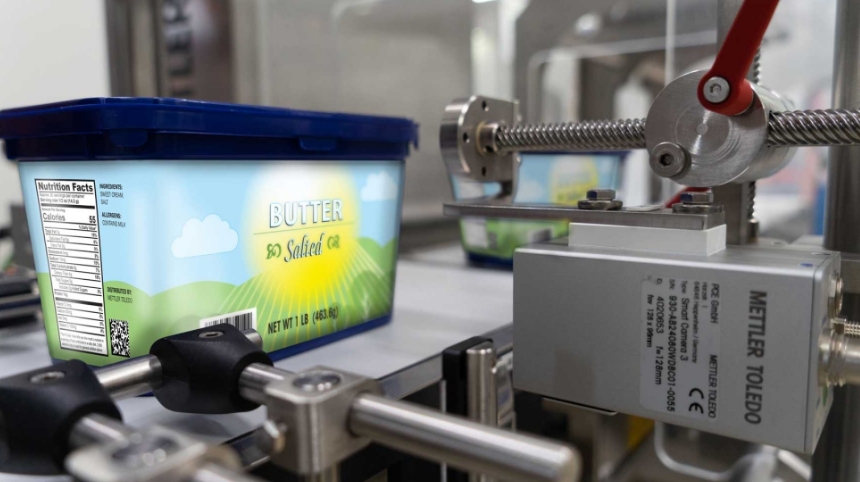Maintaining food safety with vision inspection systems
2023-10-22
Maintaining food safety should be a straightforward task, but in reality, it is becoming more complex for manufacturers to meet safety and authenticity objectives. One of the main concerns is verifying that food labels are accurate, as they provide vital information about the products that reach consumers’ tables. From ingredient transparency to allergen information, accurate labeling is essential for consumer safety and for maintaining trust in brands. In this article, we will explore the importance of accurate labeling, delve into some key regulations and milestones, and discuss the consequences of incorrect labeling on product withdrawals and brand integrity. Labeling Regulations for Consumer Protection To protect consumer safety and enable informed decision-making, regulations such as Natasha’s Law and labeling guidelines have been established. Natasha’s Law, named after Natasha Ednan-Laperouse, a teenager who died in 2016 due to the undeclared presence of baked sesame seeds in a loaf of bread, requires all UK food businesses to provide clear and accurate allergen information on pre-packaged for direct sale (PPDS) foods1. This law is aimed at protecting individuals with food allergies and empowering them to make informed decisions, thus preventing potentially fatal situations. Manufacturers trading within the EU must comply with the EU Regulation on food information provided to the consumer (No. 1169/2011). This regulation specifies the obligations of all food business operators (FBOs) to declare the presence of any of the 14 main allergens, whether used as an ingredient or processing aid3.
In addition, in the United States, food labeling updates have been introduced through the Food Labelling Modernization Act4, which increases accuracy and transparency by providing information to consumers. These regulations, along with many others, demonstrate a commitment to consumer health and instill confidence in the food industry.
In China, food labeling is governed by the Administrative Measures for Food Labeling. Pre-packaged foods must comply with mandatory national standards for pre-packaged food labeling (GB 7718-2011)2 and nutritional labeling of pre-packaged foods (GB 28050-2011). In general, food labels must contain the product name, manufacturer’s details (name, address, and contact information), production date, expiration date, and ingredient list.
Along with existing regulations, major milestones have been achieved throughout history that have defined labeling practices. From the introduction of the Pure Food and Drug Act in the U.S. in 1906 to the establishment of the nutrition facts panel in 1994, these milestones represent ongoing efforts to increase consumer protection and promote informed decision-making. Every step forward represents a commitment to the safety and integrity of the food we consume.

No More Mislabeling
Incorrect labeling can have serious consequences and lead to product withdrawals that pose risks to both consumers and manufacturers. Errors such as undeclared allergens or inaccurate ingredient lists can cause adverse health effects for consumers and damage brand reputation. Failure to provide necessary information endangers people with allergies or dietary restrictions, while undermining consumer confidence. Accurate and reliable product information is essential for informed purchasing decisions.
To address the challenge of labeling accuracy, automation and vision inspection systems have emerged as revolutionary forces in the food industry. These systems provide comprehensive label inspection throughout the production line. Vision inspection systems, equipped with smart cameras and advanced technologies, capture and analyze label content, including allergen lists, expiration dates, barcodes, and branding. Their high-resolution images and sophisticated algorithms leave no room for error.

Total Automation
The automation capabilities of vision inspection systems are truly impressive and surpass manual checks in terms of speed and efficiency. They speed up production by optimizing product changes, achieved by storing various product or label variations for inspection, which can be easily changed within the software. This minimizes labor-intensive manual processes and offers a cost-effective solution that enhances productivity and improves accuracy.
Comprehensive Packages and Labels Vision inspection systems also provide comprehensive inspection coverage, as labels are examined from all angles, even on products with irregular shapes. They detect misaligned labels, blurry prints, and other discrepancies that could jeopardize product integrity or regulatory compliance. By leaving no detail unchecked, these systems instill confidence in manufacturers’ labeling processes and product quality for enhanced brand protection.
Increased Productivity
In addition to improving accuracy, vision inspection systems reduce the risk of product recalls, protecting both consumers and brands. By supporting compliance with regulatory requirements and providing accurate information on each container and label, these systems serve as a solid defense against labeling errors. They contribute to increased uptime in production lines by minimizing interruptions and reducing manual intervention, allowing for smoother operations and greater productivity.
Vision inspection systems also offer the flexibility of being combined with other inspection technologies, such as checkweighers, which can be added to X-ray inspection or metal detection technology. These combinations and integrations save space, streamline workflows, and provide comprehensive inspection coverage across multiple production lines.
Due Diligence
Innovative vision inspection systems significantly support due diligence in the food industry. Manufacturers can monitor the labeling process in real time, collect valuable data, and maintain regulatory compliance. Integration with software solutions like ProdX™ data management software enables traceability, digitization and access to information, allowing for proactive decision-making and maintaining the highest standards of quality and safety.
Conclusion
Vision inspection systems are revolutionizing the food industry with comprehensive label inspection and process automation. Unlike traditional manual and random checks, these systems offer unmatched accuracy and assurance. Manufacturers can confidently meet evolving safety standards and regulations by installing smart cameras on product lines. The integration of vision inspection systems with existing equipment and processes also brings financial benefits. By combining consumer safety and cost-effectiveness, vision inspection systems provide an appealing solution that meets the demands of consumers and manufacturers and paves the way for greater food safety at a time when it is more important than ever.




